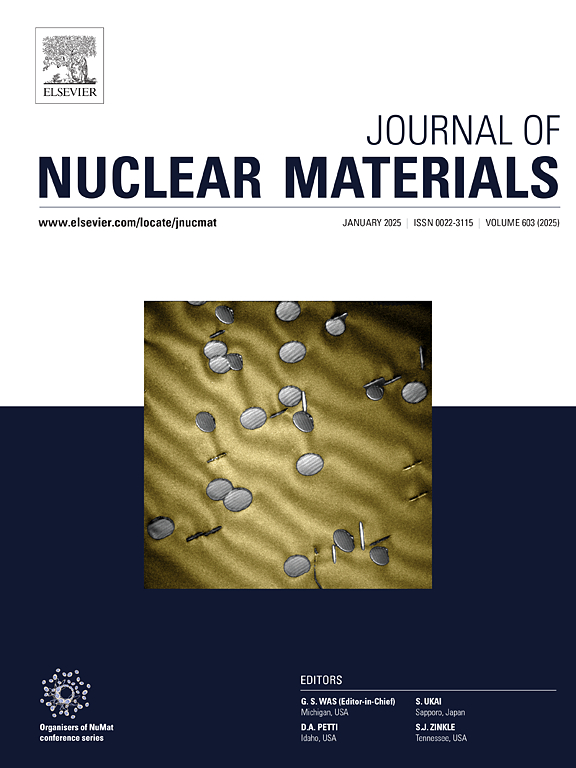Characterization of the microstructure of yttrium hydride under proton irradiation
IF 2.8
2区 工程技术
Q3 MATERIALS SCIENCE, MULTIDISCIPLINARY
引用次数: 0
Abstract
High moderation per unit volume solid moderator materials like yttrium hydride (YHx) are necessary for compact nuclear microreactors. However, the phase stability and hydrogen transport processes of YHx under high-temperature irradiation are largely unknown. Proton irradiation was conducted on YHx at 300 °C and 580 °C to 0.2 dpa using 1 MeV or 2 MeV protons in a high-vacuum environment. The hydrogen concentration was determined before and after irradiation using elastic recoil detection analysis, and microstructural evolution was examined via post-irradiation scanning transmission electron microscopy and Raman spectroscopy. Dislocation loops and cavities were observed in all conditions; their distribution was correlated with the bombarding proton energy and ion irradiation temperature. This work revealed that hydrogen retention is proportional to the formation of traps for hydrogen gas atoms and identified pathways for hydrogen release. The relative contributions of bulk or fast diffusion paths, such as grain boundaries, delamination boundaries, and stacking faults are discussed; the primary mechanisms of hydrogen loss are likely based on diffusion, ruling out artefacts of the experimental design. The study suggests proton irradiation may be a strong surrogate to study hydrogen transport in hydride moderator materials under irradiation.
求助全文
约1分钟内获得全文
求助全文
来源期刊

Journal of Nuclear Materials
工程技术-材料科学:综合
CiteScore
5.70
自引率
25.80%
发文量
601
审稿时长
63 days
期刊介绍:
The Journal of Nuclear Materials publishes high quality papers in materials research for nuclear applications, primarily fission reactors, fusion reactors, and similar environments including radiation areas of charged particle accelerators. Both original research and critical review papers covering experimental, theoretical, and computational aspects of either fundamental or applied nature are welcome.
The breadth of the field is such that a wide range of processes and properties in the field of materials science and engineering is of interest to the readership, spanning atom-scale processes, microstructures, thermodynamics, mechanical properties, physical properties, and corrosion, for example.
Topics covered by JNM
Fission reactor materials, including fuels, cladding, core structures, pressure vessels, coolant interactions with materials, moderator and control components, fission product behavior.
Materials aspects of the entire fuel cycle.
Materials aspects of the actinides and their compounds.
Performance of nuclear waste materials; materials aspects of the immobilization of wastes.
Fusion reactor materials, including first walls, blankets, insulators and magnets.
Neutron and charged particle radiation effects in materials, including defects, transmutations, microstructures, phase changes and macroscopic properties.
Interaction of plasmas, ion beams, electron beams and electromagnetic radiation with materials relevant to nuclear systems.
 求助内容:
求助内容: 应助结果提醒方式:
应助结果提醒方式:


